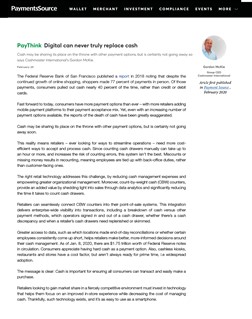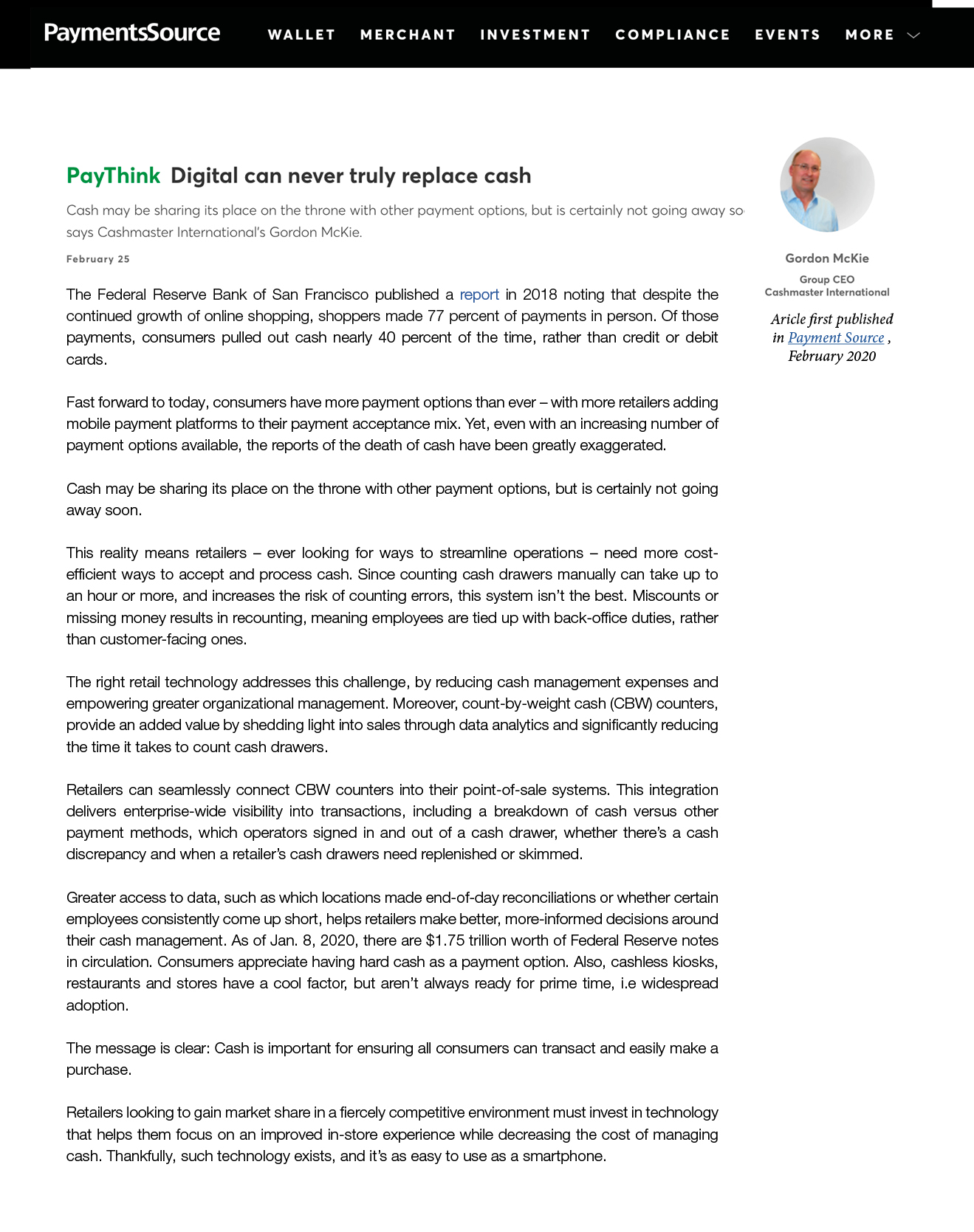'Cash may be sharing its place on the throne with other payment options, but is certainly not going away' - Gordon Mckie, CEO, Cashmaster International.

The Federal Reserve Bank of San Francisco published a report in 2018 noting that despite the
continued growth of online shopping, shoppers made 77 percent of payments in person. Of those
payments, consumers pulled out cash nearly 40 percent of the time, rather than credit or debit
cards.
Fast forward to today, consumers have more payment options than ever – with more retailers adding
mobile payment platforms to their payment acceptance mix. Yet, even with an increasing number of
payment options available, the reports of the death of cash have been greatly exaggerated.
Cash may be sharing its place on the throne with other payment options, but is certainly not going
away soon.
This reality means retailers – ever looking for ways to streamline operations – need more cost efficient
ways to accept and process cash. Since counting cash drawers manually can take up to
an hour or more, and increases the risk of counting errors, this system isn’t the best. Miscounts or
missing money results in recounting, meaning employees are tied up with back-office duties, rather
than customer-facing ones.
The right retail technology addresses this challenge, by reducing cash management expenses and
empowering greater organizational management. Moreover, count-by-weight cash (CBW) counters,
provide an added value by shedding light into sales through data analytics and significantly reducing
the time it takes to count cash drawers.
Retailers can seamlessly connect CBW counters into their point-of-sale systems. This integration
delivers enterprise-wide visibility into transactions, including a breakdown of cash versus other
payment methods, which operators signed in and out of a cash drawer, whether there’s a cash
discrepancy and when a retailer’s cash drawers need replenished or skimmed.
Greater access to data, such as which locations made end-of-day reconciliations or whether certain
employees consistently come up short, helps retailers make better, more-informed decisions around
their cash management. As of Jan. 8, 2020, there are $1.75 trillion worth of Federal Reserve notes
in circulation. Consumers appreciate having hard cash as a payment option. Also, cashless kiosks,
restaurants and stores have a cool factor, but aren’t always ready for prime time, i.e widespread
adoption.
The message is clear: Cash is important for ensuring all consumers can transact and easily make a
purchase.
Retailers looking to gain market share in a fiercely competitive environment must invest in technology
that helps them focus on an improved in-store experience while decreasing the cost of managing
cash. Thankfully, such technology exists, and it’s as easy to use as a smartphone.